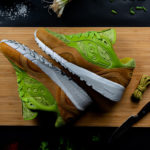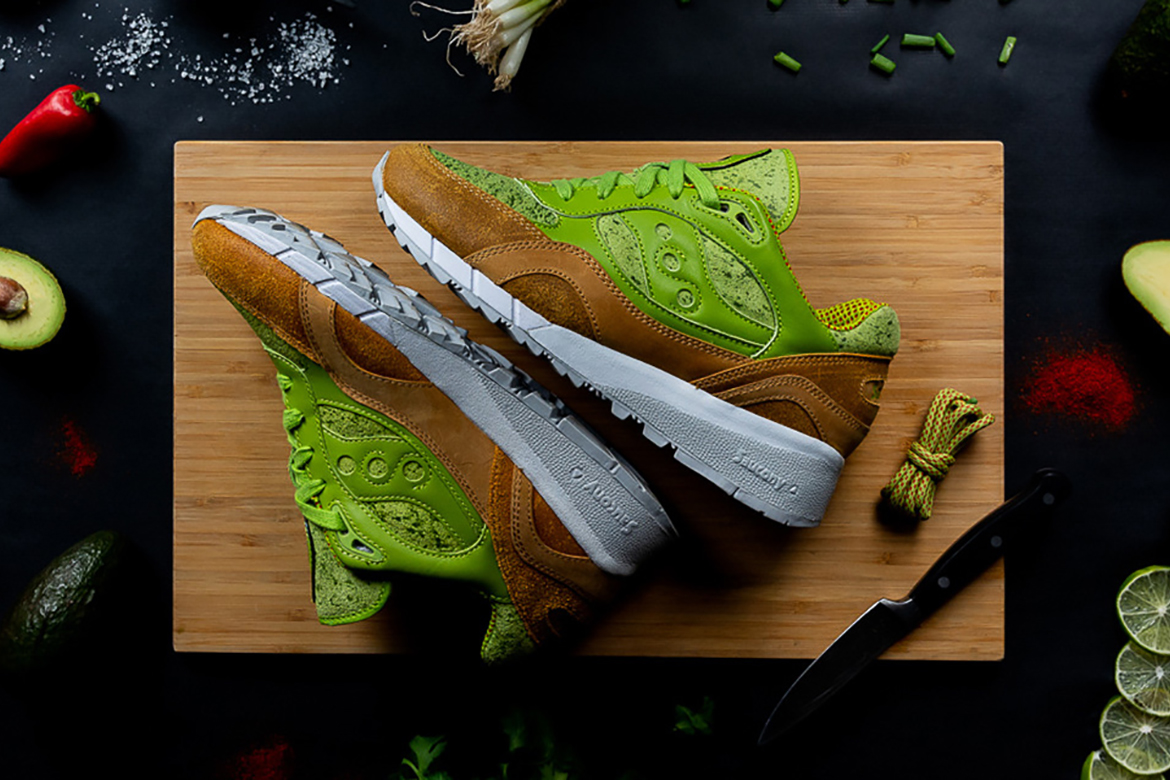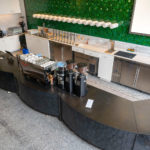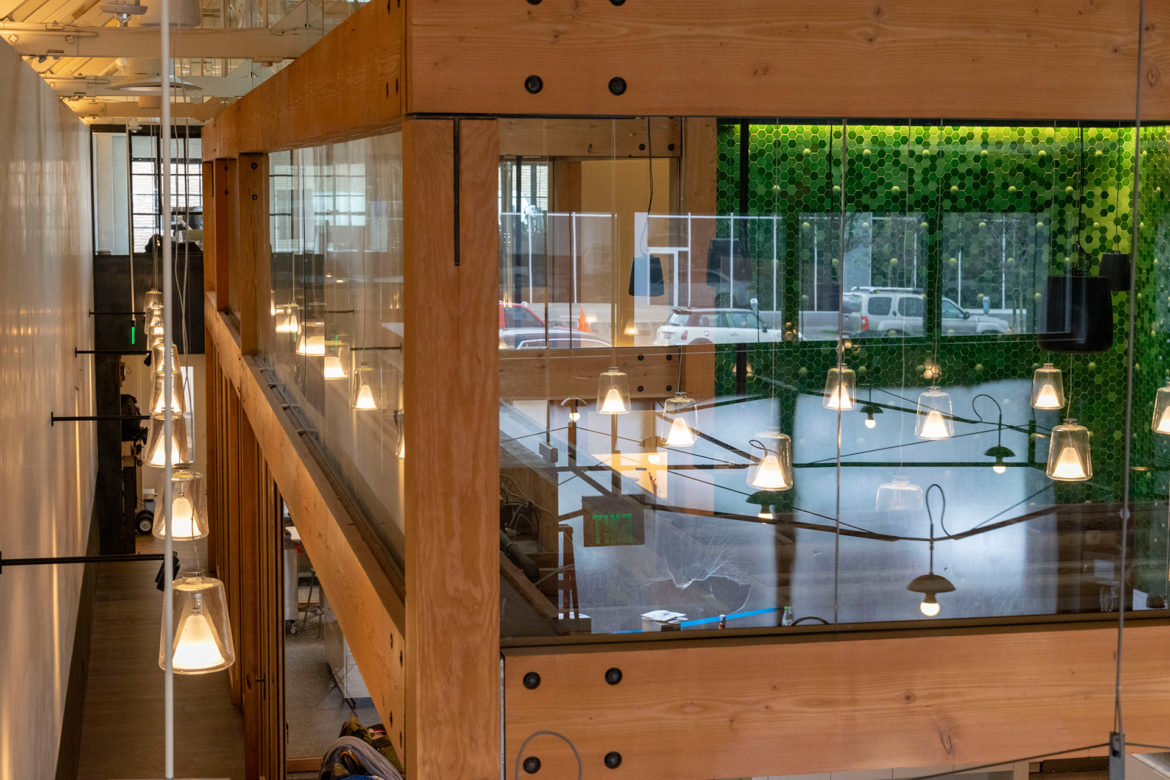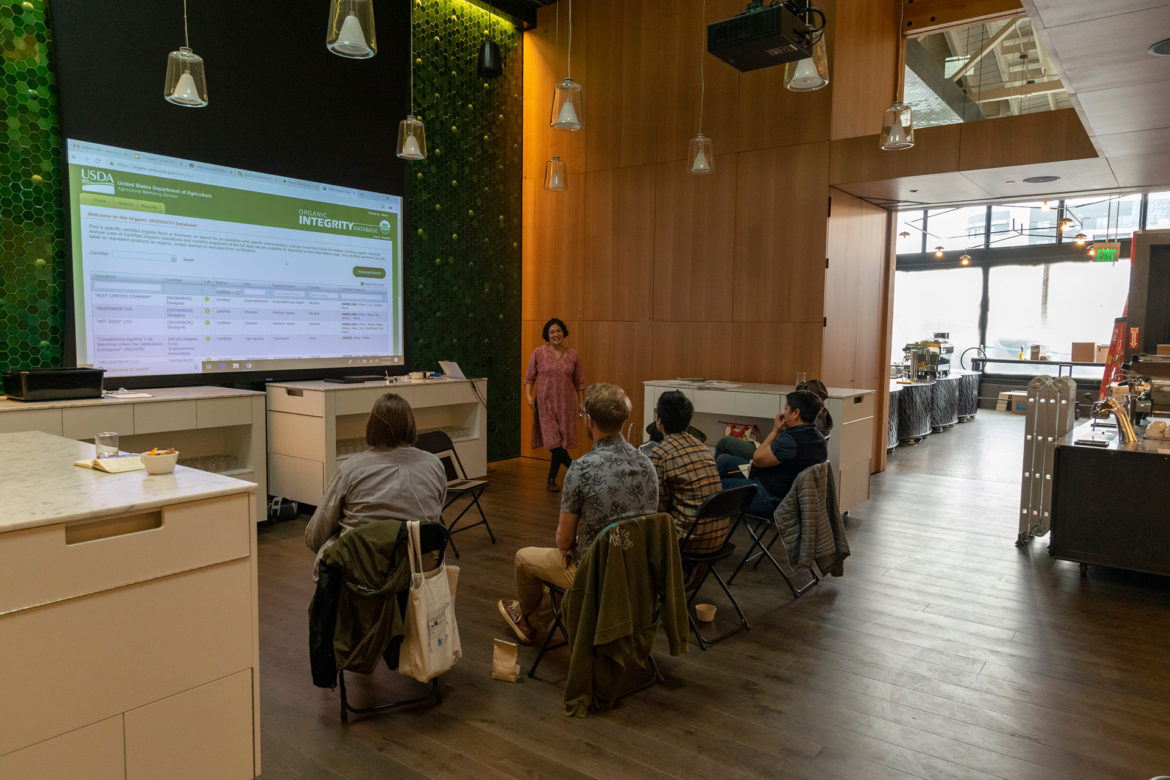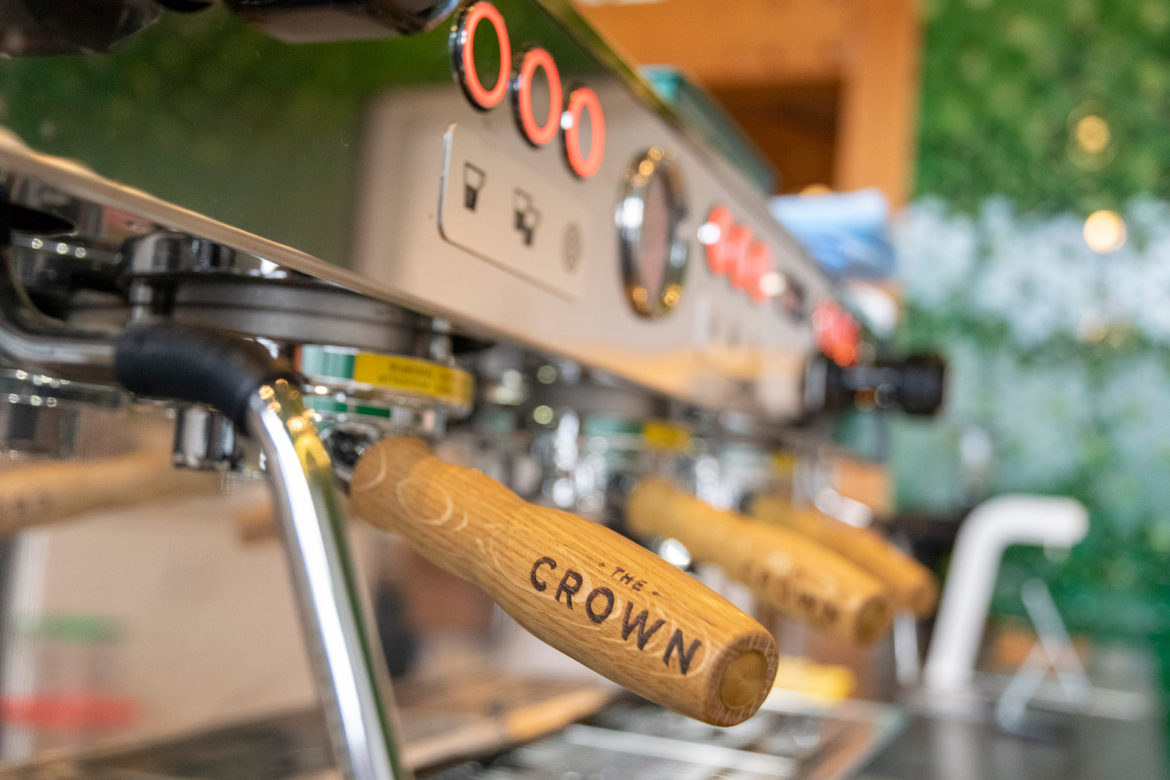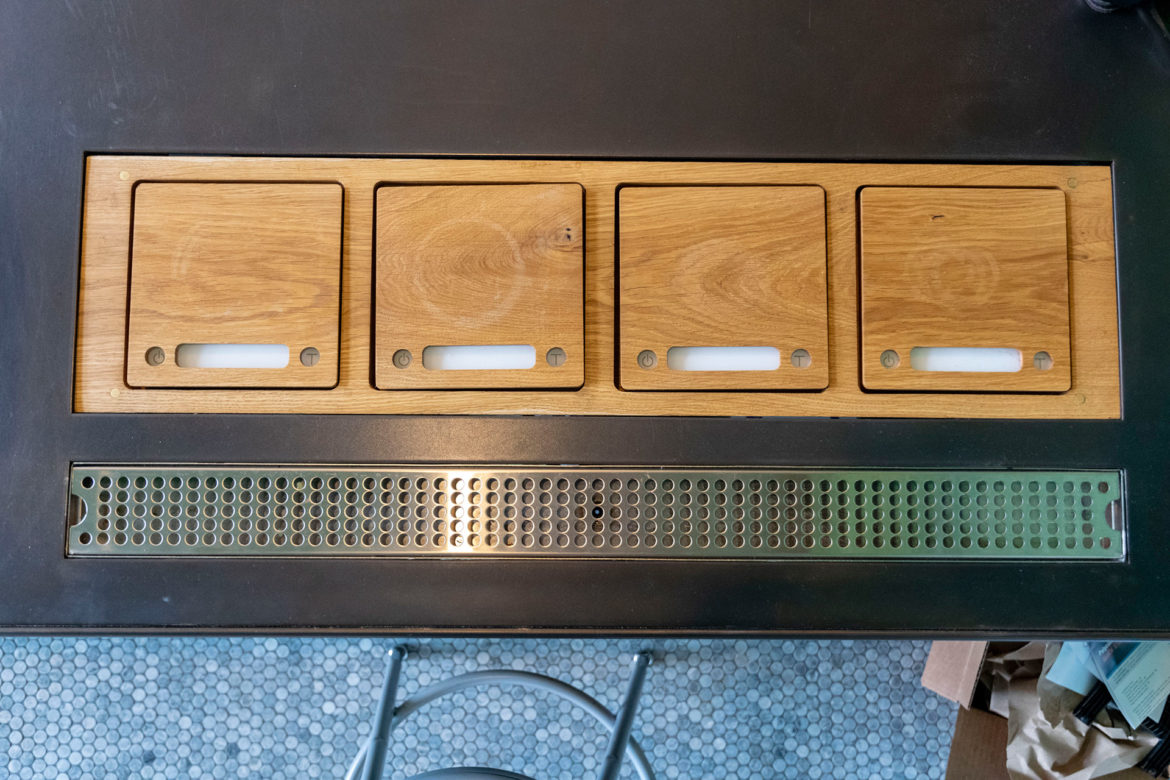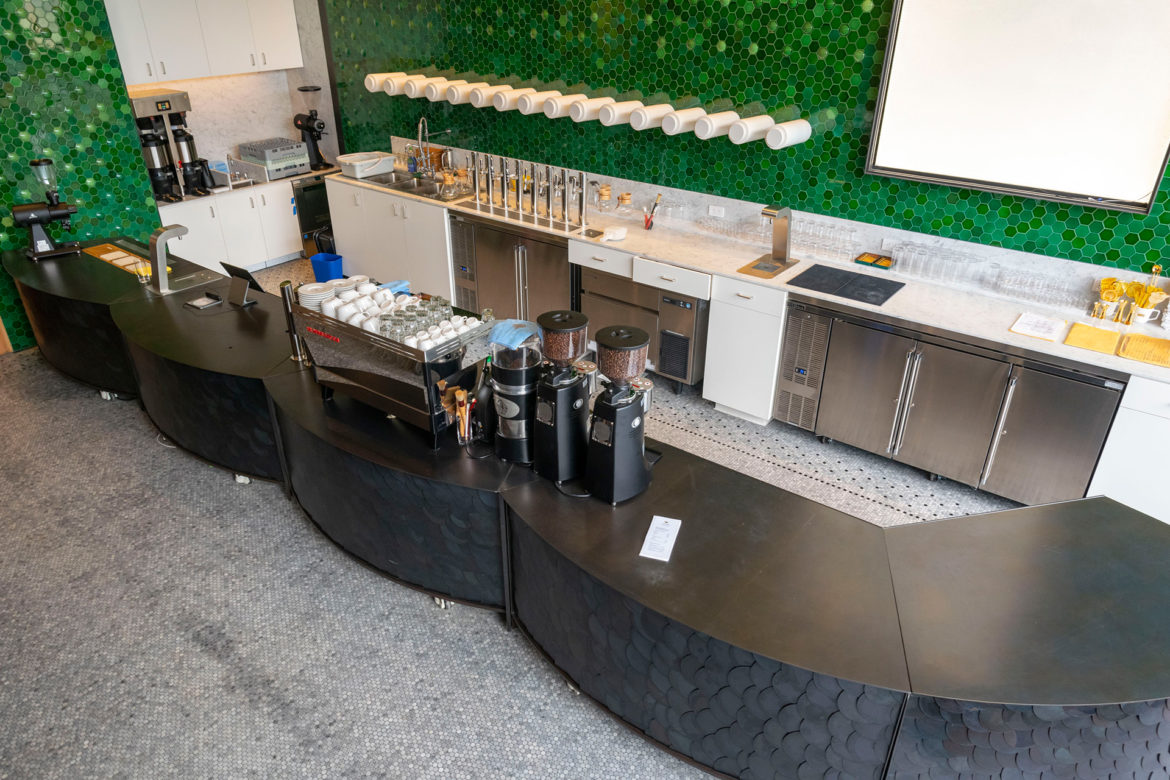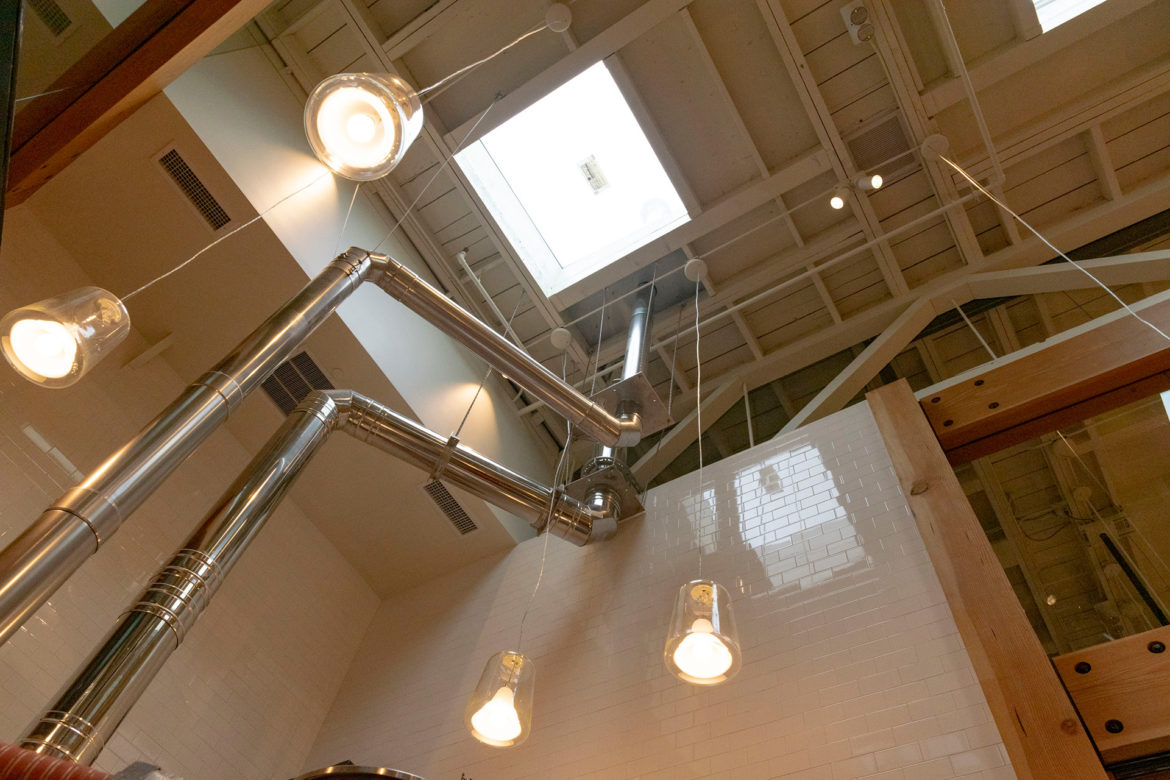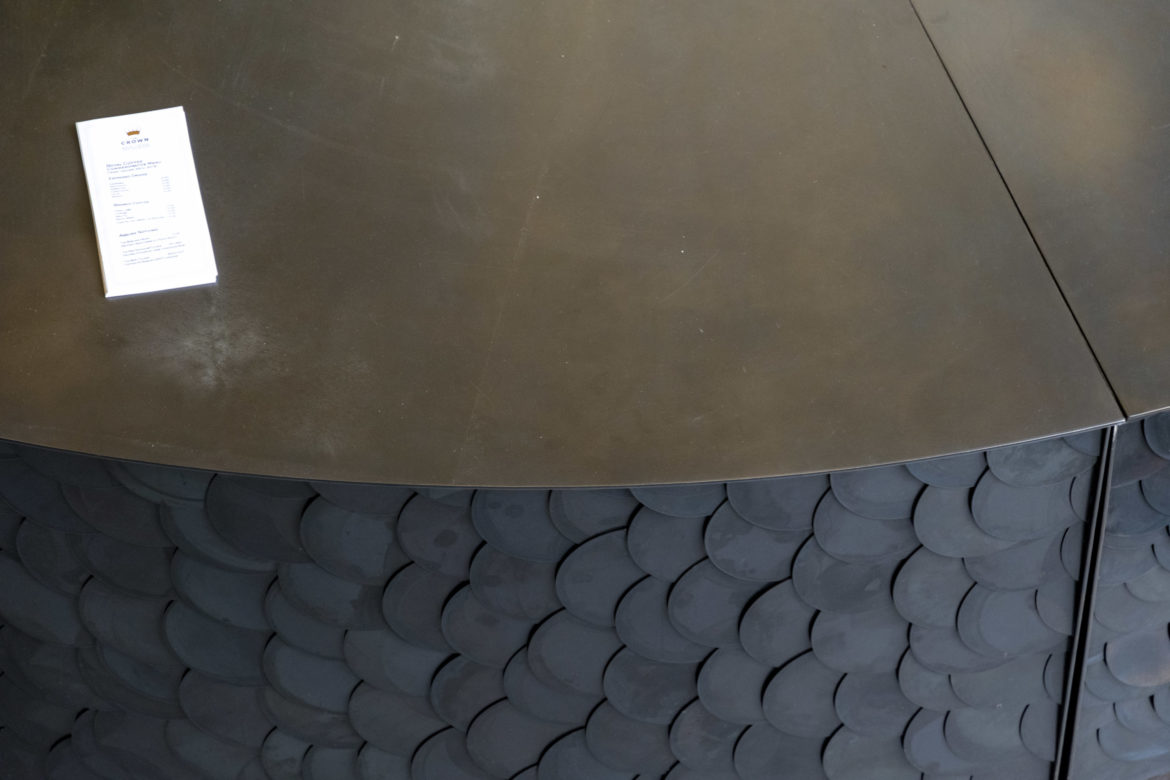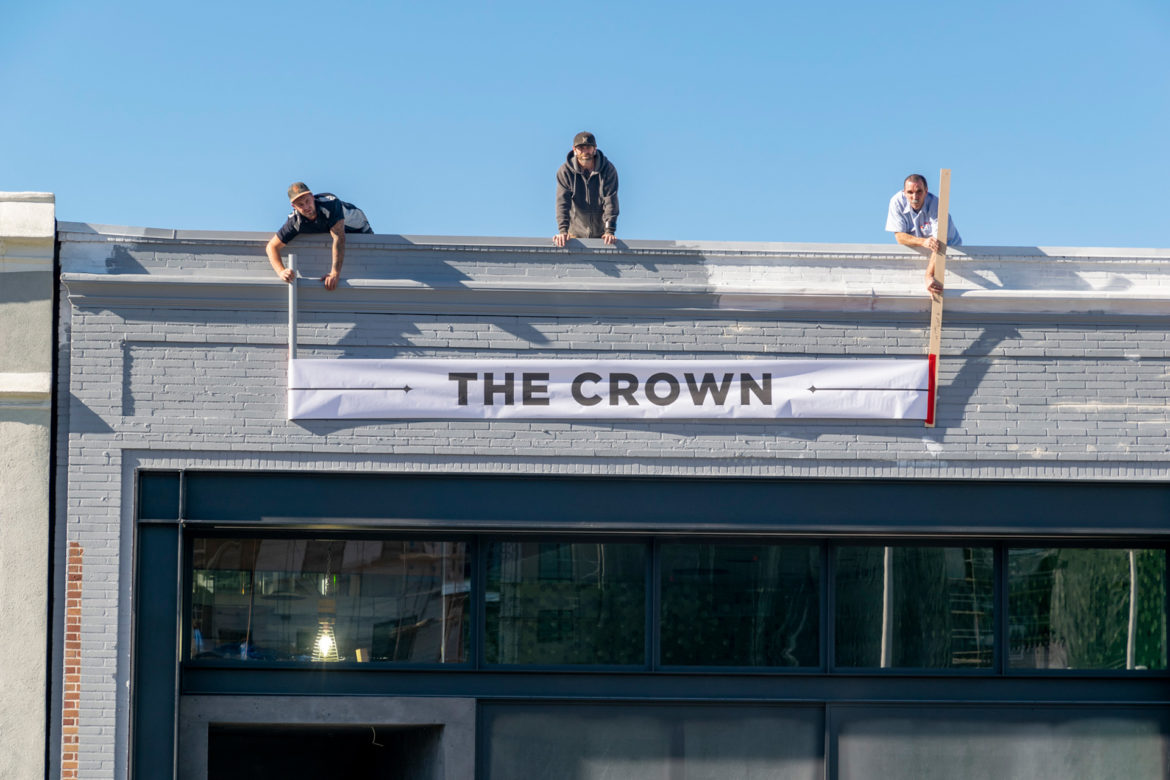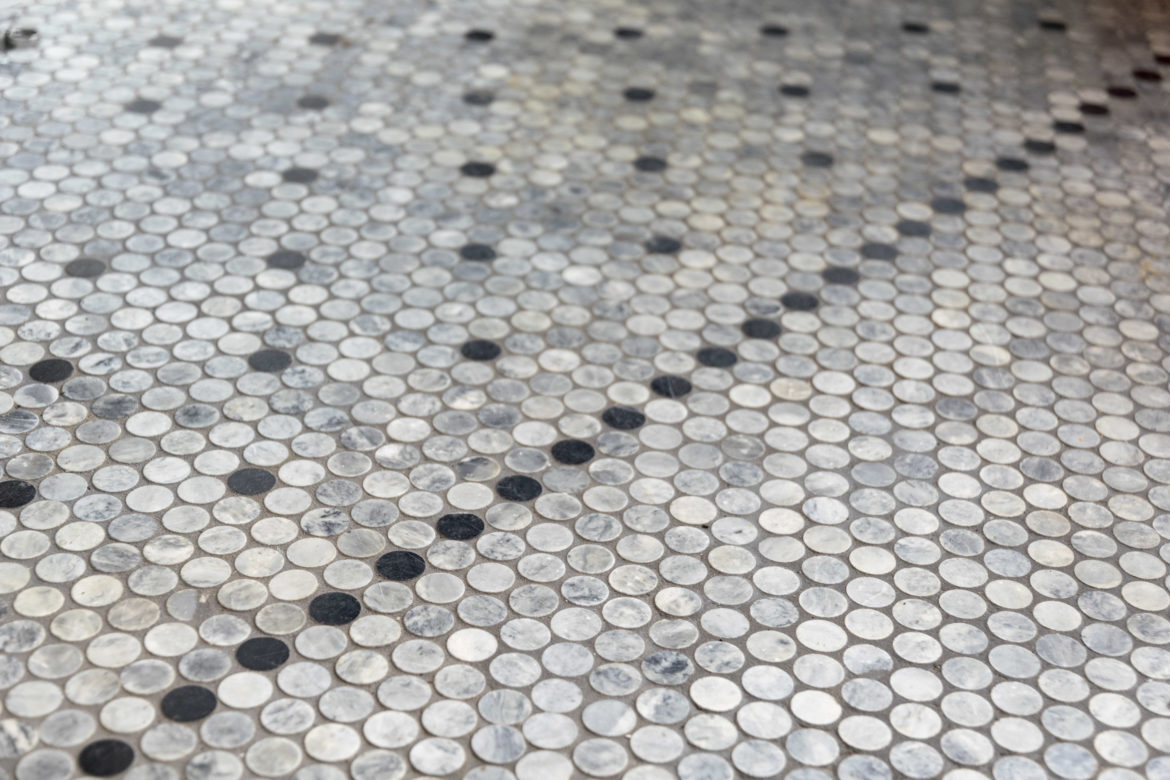¿Hacer que tus clientes se mantengan felices? Esta es la parte fácil de dirigir una tienda de café. Hasta un 60 % de las tiendas de café y pequeños restaurantes cierran en su primer año de actividad por motivos como la saturación del mercado y la falta de capital, de experiencia en la industria o de planificación comercial.
Entonces, ¿cómo puedes diseñar un plan para alcanzar el éxito económico como propietario de una tienda de café? ¿Cuáles son los errores financieros más comunes y cómo evitarlos?
Hablé con Jim Starcev y Mark Calhoun de PerfectCube y Chris Deferio del pódcast Keys to the Shop para escuchar sus consejos. Jim y Mark presentarán la ponencia “Real Numbers in Your Café: The Financial Side of Running a Successful Business” (Las cifras reales de tu tienda de café: el lado financiero de dirigir un negocio exitoso) durante el Coffee Fest New York 2019 el 3, 4 y 5 de marzo, mientras que Chris dictará la conferencia “The Top 10 Ways to Lose Employees” (La 10 maneras mejores para perder a los empleados). Puedes reservar tu entrada aquí.
Estas ponencias forman parte de una serie de seminarios gratuitos y pagados en el Business Operations Track del Festival de Café. Entre los temas se incluyen Entrenamiento Para Propietarios de Negocios, Estrategias de Fijación de Precios y Reducir El Desperdicio Y Ahorrar Dinero. Además del Festival de Café, también se realizará el International Restaurant and Foodservice Show de Nueva York.
Esto es lo que Jim, Mark y Chris dijeron acerca de dirigir una tienda de café económicamente saludable.
Read this in English How to Plan For a Financially Successful Coffee Shop

No evalúes tu rentabilidad según tu popularidad.
Entiende Tus Costos Y Ganancias
Una cosa es distinguir entre tus cortados y tus piccolos, ¿pero puedes diferenciar tus costos fijos de tus costos variables? Como propietario de una tienda de café, entender los detalles de la estructura de costos y los modelos de ingresos te ayudará a diseñar tu plan de negocios.
Además, este conocimiento resulta útil en discusiones sobre litigios y normativas, cuando consultas a un contador y cuando estás decidiendo si deberías invertir en nuevos equipos o abrir una tienda nueva. Sobre todo, te ayudará a identificar los factores en los que debes concentrarte u optimizar para aumentar tu rentabilidad.
“Afortunadamente, no hay una terminología especializada para el café cuando se trata de métricas de negocio”, dijo Chris. “Esto significa que puedes hablar con alguien sobre la elaboración de un buen sistema de métricas para hacer un seguimiento de tu tienda y no se requiere ningún tipo de traducción”.
Entonces, estos son algunos términos financieros comunes que deberías conocer:
El margen de ganancia: La cantidad de cuánto los ingresos por ventas superan los gastos. Cuando piensas añadir un producto, deberías tener en cuenta los costos de los insumos, los desperdicios y la mano de obra. Con esto podrás fijar el precio del producto para que se cubran todos estos costos adecuadamente.
Tu estado de ganancias y pérdidas (G&P) frente a tu balance general: los dos son estados financieros que emiten las empresas regularmente para mostrar la situación financiera del negocio. Un estado de ganancias y pérdidas desglosa los ingresos, los costos y los gastos que se efectuaron durante un período determinado. Un balance general es un registro de los activos y los pasivos de una empresa y su capital social en un momento específico.
El costo de los bienes vendidos (CBV): los costos directos de la producción de bienes vendidos en una empresa. Esto incluye tanto los costos de los materiales utilizados como los costos directos de la mano de obra.
Los costos directos: el costo directo de un producto, considerando los materiales y la mano de obra empleados en la elaboración, sin incluir los costos fijos. Jim dijo: “Me gustan los costos directos como número, porque son dos variables que controlas: CBV y mano de obra”.
Los costos variables y los costos fijos: Entre los costos fijos se incluye a menudo el alquiler, los inmuebles, las máquinas, entre otros. Los costos variables son aquellos que varían según el volumen de producción. “Tus costos variables [son] la [suma] de los índices de tu CBV y mano de obra”, dijo Jim. “Tu costo fijo es el alquiler y los costos de ocupación en general. [Con frecuencia, estos son] los tres motores que determinan si tu tienda de café está generando [ganancias] o no, en la mayoría de los casos”.
Los costos de los alimentos: el costo de las materias primas para elaborar un plato, como porcentaje de la ganancia que generas con ese producto. Esto te ayuda a fijar los precios de tu menú correctamente. “También es una manera para incursionar en el seguimiento de los desperdicios”, dijo Jim. “Sé exactamente cuánto me debería costar elaborar un producto; [también] sé que esto es cuánto vendimos de [ese producto]. [Si] mi costo de alimentos ideal fuera del 22% y mi costo CBV real fuera del 24%, sé que tengo exactamente un 2% de desperdicio”.
El retorno sobre la inversión (RSI): es un índice de las ganancias y las pérdidas que generó una inversión en relación con la cantidad de dinero que se invirtió. “Debes asegurarte de que cada decisión de negocio que tomes (comprar un equipo, hacer un descuento, etc.) valdrá la pena y que recuperarás cada dólar que invertiste”, dijo Mark.
Los costos de crecimiento: es el costo de financiar tu crecimiento y expansión, que en general se mantienen durante un tiempo.
También te puede gustar Cómo Diversificar la Oferta y Aumentar Las Ganancias en Tu Café

Una tienda de café concurrida aún puede fracasar si gestiona mal sus márgenes de ganancia y sus costos.
Emprende La Guerra Contra El Desperdicio
Monitorear, gestionar y minimizar el desperdicio es una parte esencial del éxito financiero. ¿Pero en qué deberías enfocarte para reducir el desperdicio, especialmente en cuanto a los productos perecederos a granel, como el café, la leche y, en algunos casos, los alimentos?
Todos mis entrevistados estuvieron de acuerdo en que es importante gestionar bien el inventario. “Deberías estar llevando un registro del volumen de existencias y basar la cantidad que tienes en los estantes en el tiempo que tardas en moverla”, dijo Chris. “Tener un exceso de inventario en el almacén implica acaparar dinero que se podría usar para cubrir otras necesidades en la tienda de café cuando surjan”.
“[Con] la gestión de las existencias, hay muchos detalles que realmente tienes que entender, en particular, ‘¿cuál es la vida útil de todos mis productos?’”, agregó Jim. “Si mis productos de repostería duran dos días, tener provisiones de productos de repostería para una semana es un error muy grave. El café dura dos semanas, pero tener una cantidad necesaria para dos meses es un problema”.
Chris dijo: “Monitorea cuán rápido consumes una bolsa de cinco lb en la barra, y también los paquetes al por menor”. A la hora de reemplazar las existencias en la barra, busca en los estantes los productos de venta al por menor que se están poniendo demasiado viejos para venderlos a clientes (dos semanas es una buena regla). Luego, prepara ese café en tu barra en lugar de pedir una nueva bolsa de cinco lb de los mismos granos.
“En el peor de los casos, tendrás una enorme cantidad de café que está demasiado viejo para prepararlo en la barra porque no puedes moverlo y luego terminarás donándolo o regalándolo”, enfatizó Chris.
Además, es importante equilibrar cuánto te costará el almacenamiento frente a cuánto te costará mantener existencias siempre frescas y en cantidades moderadas. “No debes tener demasiadas existencias a menos que te hagan ahorrar más dinero a largo plazo”, me dijo Jim.
Por ejemplo, podría haber un costo de entrega para la leche. “Si estoy pagando un gasto de envío y de repente descubro que la leche costará USD 5 por galón contra los USD 3 por galón cada vez que la pido, de pronto empezaré a reflexionar, podría pedir una entrega por semana [en vez de dos]”, dijo.

Debes saber cuánta leche necesitas tener en existencias y cuánta se tira en el desagüe.
Identifica Tus Costos Escondidos De Personal
Rastrear gran parte del desperdicio de los productos es relativamente fácil. ¿Pero qué sucede cuando estás derrochando cosas que son menos tangibles o más difíciles de separar? ¿Puedes registrar cuánto están restando indirectamente estos factores a tu margen de ganancia? ¿Cuáles son algunos de estos gastos ocultos y cómo reducirlos lo mejor posible?
Algunos gastos ocultos se ocasionan debido a la falta de formación del personal. Los gastos pueden surgir a raíz de un control inadecuado de las porciones; cantidades pequeñas de leche, alimentos y café que se acumulan con el paso del tiempo. “[Con frecuencia], alguien estará haciendo un latte y [usará] la cantidad de leche que necesita y la cremará, llenará la taza y… quedarán dos o tres onzas que simplemente se tirarán en el desagüe”, dijo Jim.
“Las cosas que se deben a la falta de capacitación y, por lo tanto, de precisión son [un desperdicio de café cuando] se calibra, se prepara demasiado, se acumula café preparado, se rompen las vajillas de servicio, no se cumple con el mantenimiento preventivo del equipo, etc.”, agregó Chris. La respuesta, me dijo, es formarse a sí mismo y al personal para tener conocimientos, ser detallistas y hacer las cosas con propósito.
“Los gastos de personal son uno de los factores más grandes para considerar cuando se mira la rentabilidad de una tienda”, enfatizó. “La formación del personal debe implementar un sistema de contratación firme que invierte significativamente por adelantado, con el fin de prepararlos adecuadamente para el éxito duradero. Reducir los gastos brindando menos formación nunca funciona a largo plazo”.

Una buena capacitación del personal puede traducirse en el uso eficaz del tiempo y los recursos detrás de la barra.
Establece Los Turnos De Forma Inteligente
Otra causa común es tener demasiado personal, sobre lo que Chris bromea diciendo que es un gasto oculto que no está tan oculto. “A veces, los propietarios no piensan en mirar la cantidad de personas que está en un turno, porque su flujo de trabajo se basa en un número específico”, dijo. “Pero si las cifras no justifican tres personas, tienes que acomodar y modificar”.
“Cuando las personas están ocupadas, suelen saturar los turnos del inicio y el final de [los períodos muy concurridos]”, agrega Jim. “Pero…si son 15 minutos delante y 15 minutos detrás, son 30 minutos. Treinta minutos adicionales para tres personas trabajando [equivale a] 1,5 horas. Si esto sucede cinco veces en la semana…arroja una diferencia enorme para ti”.
Mark desaconseja que dejes que tus sentimientos impongan la dotación de personal en cualquier momento determinado. “Hemos visto esto muy seguido: antes de que sean muy concurridos y justo después de que lo sean, [los administradores de tiendas de café] mantienen un alto nivel de personal porque sienten que son concurridos, pero en realidad no lo son”, dijo. “Tienen que empezar a dejar que las personas se vayan a casa”.
Esto puede ser difícil por varias razones, especialmente para los propietarios de tiendas pequeñas. A menudo, los propietarios y los baristas tienen una relación que se acerca a la amistad y los propietarios saben que su personal necesita estas horas de trabajo. Además, tal vez haya leyes en vigor que no permiten que los empleadores reduzcan las horas que se habían pactado anteriormente.
Asimismo, disminuir las horas tiene un efecto negativo adicional de aumentar el descontento del personal. Esto podría empeorar las ventas en una industria que ya es famosa por los altos niveles de rotación del personal.
La solución, según Mark y Jim, es una programación inteligente y predictiva. Esto permite que el personal prediga los momentos concurridos y los tranquilos, y también que los propietarios sean claros con respecto a cuando se espera que los baristas se queden por más tiempo o terminen de trabajar antes. Esto brinda una mayor flexibilidad para reducir los costos de mano de obra ocultos.
Además, un salario justo, canales de comunicación claros y una cultura que se preocupa por los empleados y los reta a crecer puede disminuir la rotación del personal.
También te puede gustar Cómo Hacer Para que Tus Baristas No Renuncien

Las mesas vacías y ninguna fila implican que se necesitan menos miembros del personal detrás de la barra.
Maneja Tus Menús Y Fijación de Precios
No importa cuán eficientemente funcione tu tienda de café, aun así, fracasarás si no tienes suficiente margen de ganancia por producto o un menú que atrae a los clientes.
Según Chris, es fundamental que tu tienda ofrezca variedad, pero no tanta como para que termines sacrificando la calidad. “Hay productos básicos que las personas buscarán todos los días, como bebidas a base de café, café en granos y té”, dijo Chris. Estos son tus motores de negocio principales y deben ser de alta calidad y muy rentables.
“No ofrezcas demasiadas cosas para tratar de complacer a todos. No lo lograrás”, recomienda Chris. “Haz que sea simple y excelente”.
Sin embargo, no recortes tu menú demasiado: sigue siendo una buena idea ofrecer productos con valor agregado, como alimentos, que también atraen a las personas. También puedes optar por vender ítems al por menor.
Como regla general, Chris cree que el margen de ganancia aceptable para las bebidas debería ser alrededor del 70 %, luego de considerar todos los costos materiales. Para los productos minoristas, él recomienda multiplicar por dos lo que pagaste para empezar y luego sumar un poco más para así recibir ganancias de la venta.
Al considerar tu estrategia de fijación de precios, Jim y Mark hacen hincapié en que también es importante implementar pequeños aumentos de precios de manera gradual por lo menos una vez al año. “Simplemente es una buena forma para dirigir tu negocio”, dijo Jim.
“Casi no tiene efecto en la pérdida de clientes. Gran parte de las tiendas de café tienen miedo de aumentar los precios porque hay un cliente furioso y están preocupados de que todos piensen de la misma manera. Pero en realidad, probablemente el 95% de tus clientes ni siquiera se dé cuenta”.
Jim y Mark me contaron acerca de uno de sus clientes, quien usó la tecnología PerfectCube: el cliente aumentó sus precios del 5% y, en consecuencia, perdió el 1% de sus clientes. Sin embargo, aun así, obtuvo una ganancia adicional de USD 1300.
“Lo que tratamos de mostrar es que incluso si haces enojar al 1% de tus clientes y [estos] nunca más vuelven (que no sucederá), sabes que de todos modos ganarás más dinero, porque así funciona el margen de ganancia”, dijo Mark. “Queremos que la gente entienda que no es peligroso subir los precios en pequeñas cantidades, que lo hagan una vez al año”.
Chris desaconseja caer en la tentación de fijar precios bajos para atraer más clientes. “Esto te matará al final”, dijo. “Necesitas ganancias para mantener el negocio y crecer. Fija los precios que necesites para tener suficiente ganancia para que puedas servir bien a tus clientes en el futuro”.
Considera fijar un precio más alto para los productos más vendidos o los de temporada. Mark recomienda que tal vez puedas vincular el aumento de precios a una oferta o a los cambios de estación. Y enfatizó: “La mayoría de los clientes no se da cuenta o no les importa, porque entienden que los precios aumentan”.

Selecciona tu menú y fija los precios con cuidado para garantizar buenos márgenes de ganancia.
Calcula El Tamaño Y Realiza El Plano Ideales De Tu Tienda
Por último, el plano y el tamaño de tu tienda impactan de forma directa tu éxito financiero. Evitar embotellamientos y elementos de diseño fastidiosos es esencial, dado que estos factores pueden hacer que los clientes busquen café en otro lugar. La circulación de tus clientes debería ser intuitiva y sencilla desde el principio hasta el final.
La colocación de los productos es fundamental. Los productos al por menor deben estar en lugares llamativos, donde las personas normalmente se reúnen y miran, como cuando ingresan, mientras esperan en la fila y en la caja.
Si tienes una tienda más grande, es muy probable que tengas costos generales más altos. Diseñar tu tienda de café para que alcances todos los días (al menos) la cantidad media de clientes que necesitas para obtener ganancias es crucial. No consideres solamente el número óptimo al que tienes que llegar, o los pedidos de los clientes y el consumo de alimentos y bebidas, sino también el índice de rotación de clientes.
La idea es que tu tienda no se sienta tan llena, que aleja los clientes. Tampoco debes tener demasiados empleados cubriendo los turnos, ya que esto podría perjudicar el servicio al cliente.
“Para esto, debes saber o proyectar lo que gasta o tiene que gastar cada cliente”, dijo Chris. “Puedes encontrar informes sobre el número promedio de ventas, la cantidad promedio de recibos y el número promedio de productos comprados en el back-end de gran parte de los sistemas POS”.

La frecuencia con la que ocupas tus mesas puede afectar el tamaño de tienda que necesitas para tener ganancias.
Dirigir una tienda de café económicamente viable no tiene que ver únicamente con una buena promoción de la marca personal, un buen café y una buena experiencia para el cliente. También se trata de planificar con cuidado, entender tus márgenes de ganancia y reducir tus costos. Así que, asegúrate conocer realmente tu negocio. Calcula cuánto necesitas ganar, cuánto necesitas servir y cuánto personal y cuántas existencias necesitas en realidad.
Porque el conocimiento y la planificación son realmente la clave del éxito en la industria de las tiendas de café.
¿Disfrutaste este artículo? Lee Cómo Diversificar la Oferta y Aumentar Las Ganancias en Tu Café
Escrito por Sierra Burgess-Yeo.
Traducido por Laura Fornero. Traducción editada por María José Parra.
Ten en cuenta: este artículo fue patrocinado por Coffee Fest. Suscríbete para asistir al Coffee Fest New York aquí o mira los próximos eventos en EE. UU. aquí.
Perfect Daily Grind
¿Quieres Seguir Leyendo Artículos Como Este?¡Suscríbete Aquí!
The post Cómo Planificar Para Una Tienda De Café Económicamente Exitosa appeared first on Perfect Daily Grind.
from RSSMix.com Mix ID 8200593 https://www.perfectdailygrind.com/2019/03/como-planificar-para-una-tienda-de-cafe-economicamente-exitosa/





